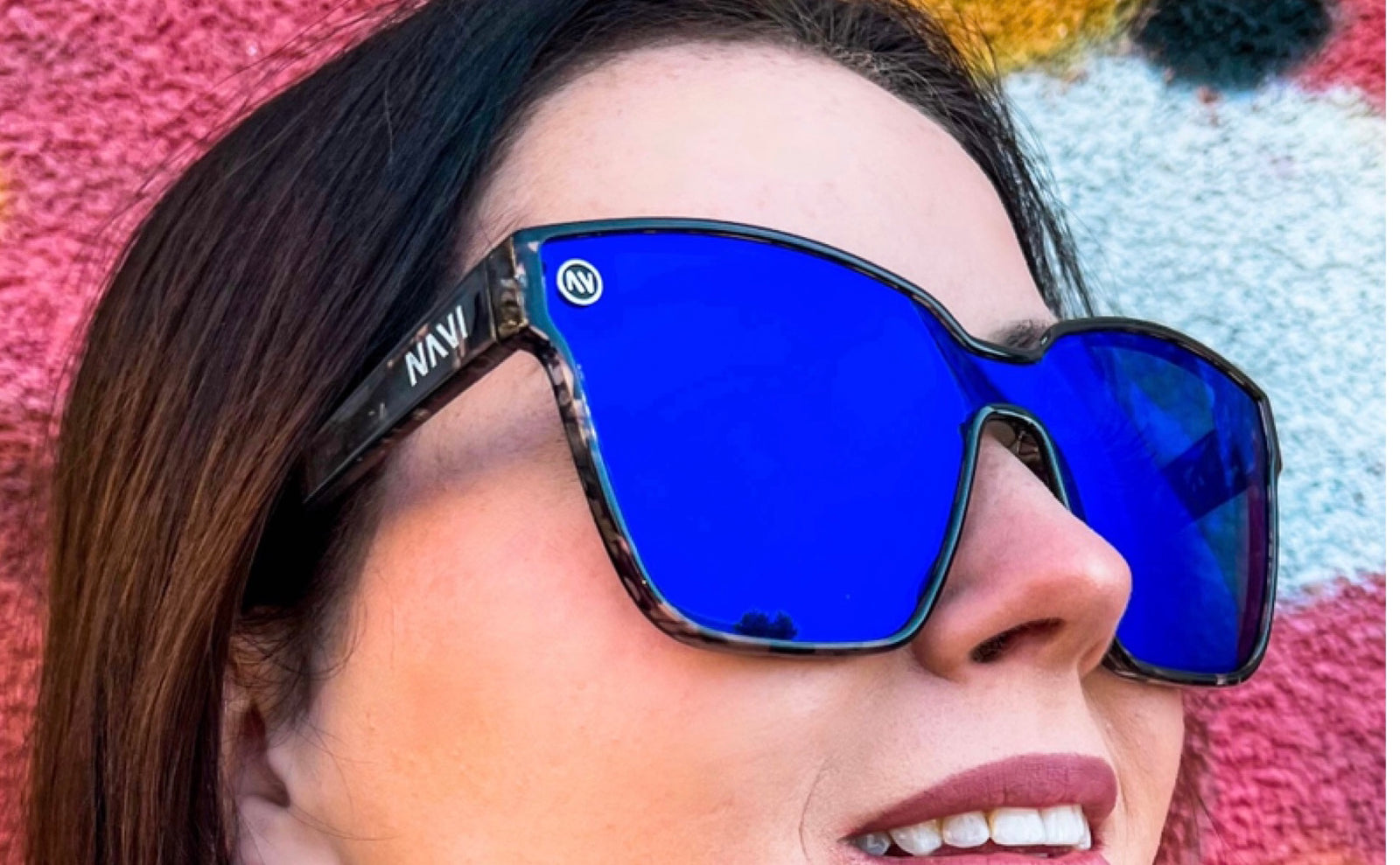Are you someone who frequently experiences glare from sunlight while driving, skiing, or engaging in outdoor activities? If yes, then polarized sunglasses can be a game-changer for you! Polarized sunglasses have been gaining immense popularity over the years, thanks to their unique features that reduce glare and enhance vision clarity. In this article, we'll dive into the world of polarized sunglasses, what they are, how they work, and why you need them in your life.
What are Polarized Sunglasses?
Polarized sunglasses are specialized eyewear designed to reduce glare and improve visual clarity by blocking polarized light waves. These glasses feature a special filter that blocks horizontally polarized light, which is known as glare, while still allowing vertically polarized light to pass through.
Polarized sunglasses are available in a wide range of styles, from sporty to chic, and they are typically made with lightweight and durable materials such as polycarbonate, nylon, and memory metals. They are also available in prescription versions, making them accessible to people with vision problems.
How Do Polarized Sunglasses Work?
Polarized sunglasseswork by filtering out horizontal light waves that cause glare. This filter is made of a chemical compound that absorbs horizontal light waves while allowing vertical light waves to pass through. As a result, the light that enters your eyes is much more uniform, and you don't have to strain your eyes to see through glare.
Polarized sunglassesare particularly effective in reducing glare from horizontal surfaces such as water, snow, and asphalt, making them a popular choice for boaters, fishermen, skiers, and drivers. They also help reduce eye strain and fatigue, making them ideal for outdoor enthusiasts and people who spend a lot of time in the sun.
How Do Polarized Sunglasses Compare to Regular Sunglasses?
Regular sunglasses are designed to reduce the amount of light that enters your eyes, making them darker and reducing the brightness of your surroundings. However, regular sunglasses do not reduce glare, and in some cases, they can even enhance it by reflecting light off flat surfaces.
On the other hand, polarizedsunglasses are specifically designed to block horizontal light waves, reducing glare and enhancing visual clarity. Polarized sunglasses also provide better contrast and color perception, allowing you to see objects more clearly.
How to Test if Your Sunglasses are Polarized?
If you're not sure whether your sunglasses are polarized or not, there are a few simple tests you can perform to find out:
- Hold your sunglasses up to a computer screen or TV. If the screen appears black or very dark, then your sunglasses are polarized.
- Look at a reflection of the sky or clouds on a flat surface, such as a car hood or water. Tilt your head to the side while looking through your sunglasses. If the glare changes or disappears, then your sunglasses are polarized.
- Look at a digital watch or smartphone screen while wearing your sunglasses. If the screen appears black or very dark, then your sunglasses are polarized.
Benefits of Polarized Sunglasses
Polarized sunglassesoffer several benefits, including:
- Reduced Glare and Improved Vision Clarity
- Better Contrast and Color Perception
- Reduced Eye Strain and Fatigue
- Protection from Harmful UV Rays
Polarized sunglasses significantly reduce glare from horizontal surfaces such as water, snow, and asphalt. This means you can see more clearly and without any distortion or eye strain.
Polarized sunglasses enhance contrast and color perception, making objects appear sharper and more vibrant.
Polarized sunglasses reduce eye strain and fatigue by minimizing glare and providing visual comfort.
Polarized sunglasses provide 100% protection from harmful UV rays, which can damage your eyes and cause long-term vision problems.
How to Choose the Right Polarized Sunglasses?
Lens Material
When it comes to choosing the right polarized sunglasses, there are a few things to consider, such as:
Polarized sunglasses are available in a variety of lens materials, including
polycarbonate, glass, and CR-39. Polycarbonate lenses are lightweight, impact-resistant, and ideal for sports and outdoor activities. Glass lenses provide superior clarity and scratch resistance but are heavier and less impact-resistant than polycarbonate lenses. CR-39 lenses are lightweight and scratch-resistant but may not provide the same level of clarity as glass or polycarbonate lenses.
Frame Material
Polarized sunglassesframes are typically made of materials such as nylon, acetate, and metal. Nylon frames are lightweight, durable, and flexible, making them a popular choice for sports and outdoor activities. Acetate frames are lightweight and comfortable but may not be as durable as nylon frames. Metal frames are durable and stylish but can be heavier than nylon or acetate frames.
Style Fit
Polarized sunglassesare available in a variety of styles, from sporty to chic. Some popular styles include aviator, wayfarer, wraparound, and round. The style you choose
will depend on your personal preference and the activities you plan to engage in while wearing them.
A proper fit is essential for polarized sunglasses to be effective in reducing glare and improving vision clarity. Make sure the sunglasses fit snugly on your face and don't slide down your nose or touch your cheeks.
FAQs about Polarized Sunglasses
- Are polarized sunglasses worth the money?
- Yes, polarized sunglassesare definitely worth the money if you spend a lot of time outdoors and are frequently exposed to glare from horizontal surfaces such as water, snow, and asphalt. They offer several benefits such as reduced glare, improved vision clarity, better contrast and color perception, reduced eye strain and fatigue, and protection from harmful UV rays.
- Can polarized sunglasses be worn indoors?
- Polarized sunglasses are designed to reduce glare from outdoor activities, and wearing them indoors may not be necessary. However, polarized sunglasses can be worn indoors if you are particularly sensitive to bright light or glare.
- Do polarized sunglasses affect depth perception?
- Polarized sunglasses do not affect depth perception as they do not alter the distance between objects. However, polarized sunglasses may affect the perception of contrast and color, which may impact the perception of depth.
- Can polarized sunglasses be worn for driving?
- Yes, polarized sunglasses can be worn for driving as they significantly reduce glare from horizontal surfaces such as the road, water, and snow, making it easier to see and drive safely.
- Can polarized sunglasses be worn over prescription glasses?
- Yes, polarized sunglasses are available in prescription versions and can be worn over prescription glasses for people with vision problems.
- How do I clean my polarized sunglasses?
Conclusion
- To clean your polarized sunglasses, use a soft, lint-free cloth and mild soap and water. Avoid using abrasive cleaners or paper products, as they can scratch the lenses.
Polarized sunglassesare an excellent investment for anyone who spends a lot of time outdoors and is frequently exposed to glare from horizontal surfaces such as water,
snow, and asphalt. They offer several benefits, including reduced glare, improved vision clarity, better contrast and color perception, reduced eye strain and fatigue, and
protection from harmful UV rays. When choosing polarized sunglasses, consider factors such as lens and frame material, style, and fit, and make sure to take proper care of them to maintain their effectiveness.
So, if you're looking for a way to improve your outdoor vision and protect your eyes from harmful UV rays, investing in a pair of polarized sunglasses is definitely worth it.
Remember to choose the right style and fit for your needs, and take proper care of them to ensure they last a long time.
And that's a wrap! We hope you enjoyed learning about what polarized sunglasses are and how they work to reduce glare from sunlight. If you have any questions or
comments, feel free to leave them below.




